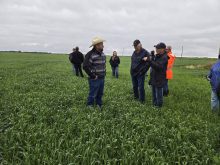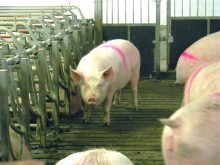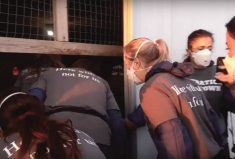 The National Oceanic and Atmospheric Administration (NOAA) predicts a record-size “dead zone” in the Gulf this summer, stretching from South Texas all the way to Alabama.
The National Oceanic and Atmospheric Administration (NOAA) predicts a record-size “dead zone” in the Gulf this summer, stretching from South Texas all the way to Alabama.
Paul Montagna, chair and professor for the Harte Research Institute for Gulf of Mexico Studies (HRI), has studied these “dead zones,” also known as hypoxia zones, for more than 20 years.
Read Also

Mazergroup’s Bob Mazer dies
Mazergroup’s Bob Mazer, who helped grow his family’s company into a string of farm equipment dealerships and the main dealer for New Holland machinery in Saskatchewan and Manitoba, died July 6 from cancer.
The “dead zone,” is caused when nitrogen-based fertilizer washes off farm fields, in the Midwest Corn Belt, and ends up in the Mississippi River, which flows into the Gulf.
Just as nitrogen-based fertilizer makes corn grow, it also stimulates the growth of plants in the water, mainly algae. The algae bloom and eventually die and decay. This process removes oxygen from the water, resulting in oxygen-depleted water where marine life can’t live.
This year’s “dead zone” is expected to be as large as 8,561 square miles along the Gulf coast which is a rich breeding ground for fish, shrimp, oysters and crab. It’s an area that accounts for about 18 per cent of the total commercial seafood sold in the United States.
“The hypoxia zones are not dangerous to fish, but cannot support bottom-dwelling life such as clams, crabs and shrimp,” said Montagna.
Larry McKinney, executive director of HRI, says this yearly threat to the Gulf is caused by one thing, ethanol.
Corn prices are high right now, so farmers are planting more of it. While you can grow many crops without fertilizer, corn requires it. The USDA estimates as much as 40 per cent of last year’s corn crop was used to make ethanol.
Last summer was one of the smallest “dead zones” on record at 2,889 square miles. Experts with NOAA say the drought in the Midwest last year kept run-off out of the Mississippi River.
Heavy rainfall in the Midwest this spring led to flooding, with states like Minnesota and Illinois experiencing one of the wettest springs on record. All of that flooding, along with bigger corn crops, means more fertilizer flowing into the Gulf.



















